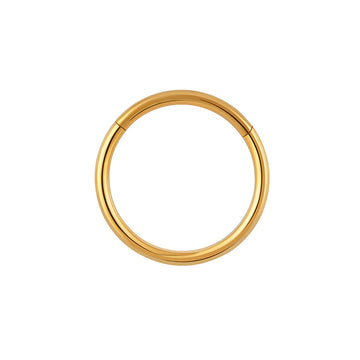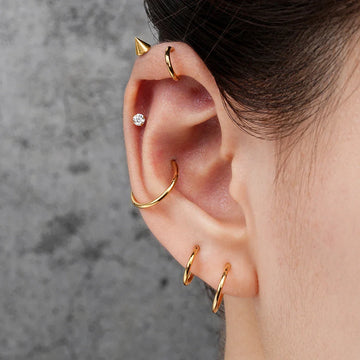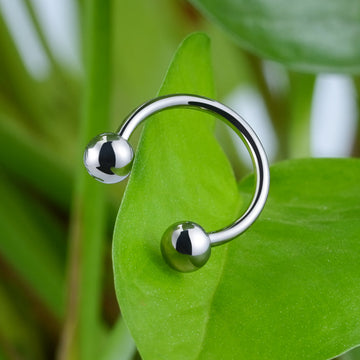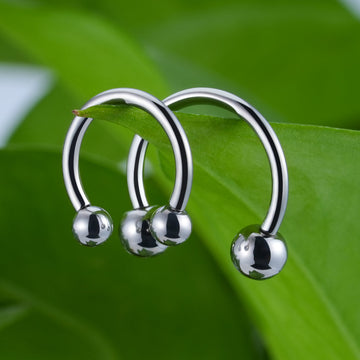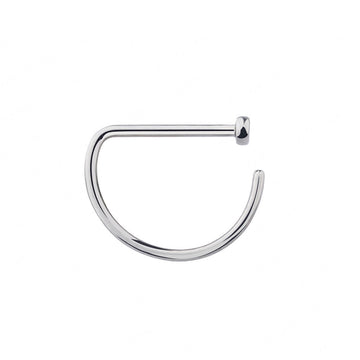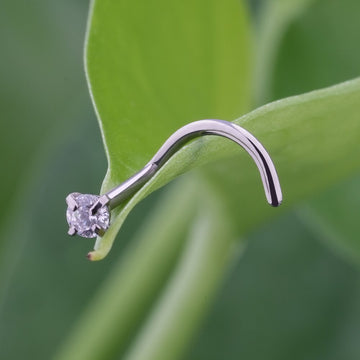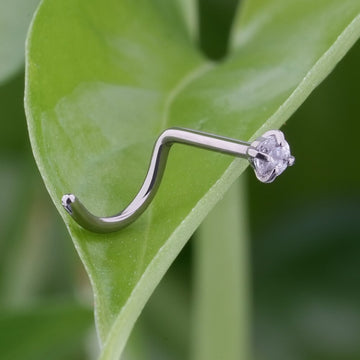Types of Nose Piercings and Their Costs, Pain, Healing, Jewelry, Sizes, Pros and Cons, Aftercare
Oct 01, 2024
The world of nose piercings is far more complex than most people realize. Whether you're choosing your first (or next!) nose piercing or simply want to learn more, here's a guide to all you need to know.
From Antiquity to the Present Day
Currently, ear piercings are probably the most popular piercing in the world. But nose piercings go back to ancient history.
They were commonplace in the Middle East and India as far back as 4,000 years ago. In Australia, aboriginal people wore septum piercings made of bone as far back as 44,000 B.C.
Nose Piercing Meaning
Ancient North African tribes used golden nose rings to signify wealth. In India, women often wore nose rings in the left nostril, believing that it would ease menstrual cramping and make childbirth easier.
Now, nose piercings are often viewed as being somewhat counterculture.
Types of Nose Piercings
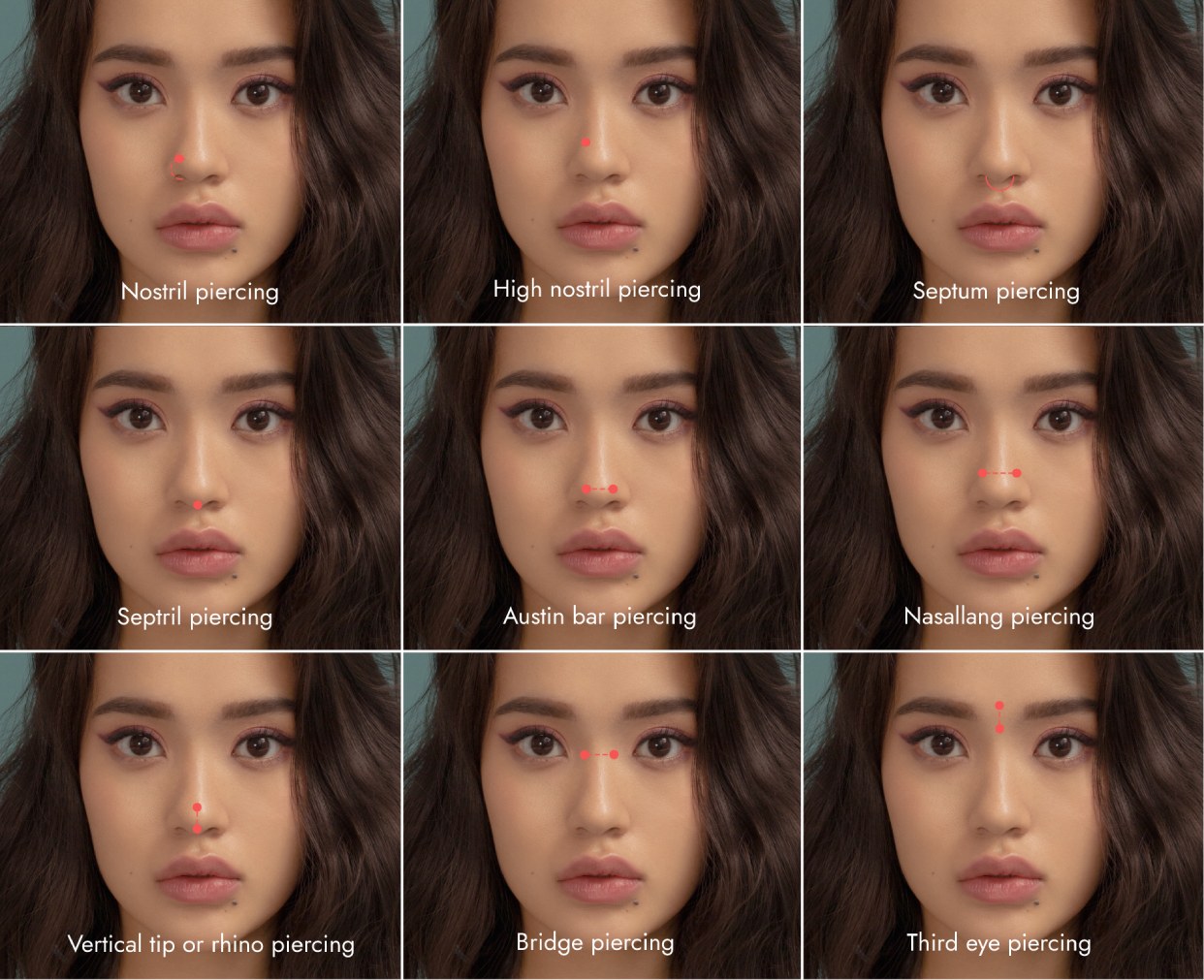
If you're fairly new to the piercing scene, you may not even be aware of all the nose piercing types out there. Here are some of the main nose piercing types:
1. Nostril Piercing
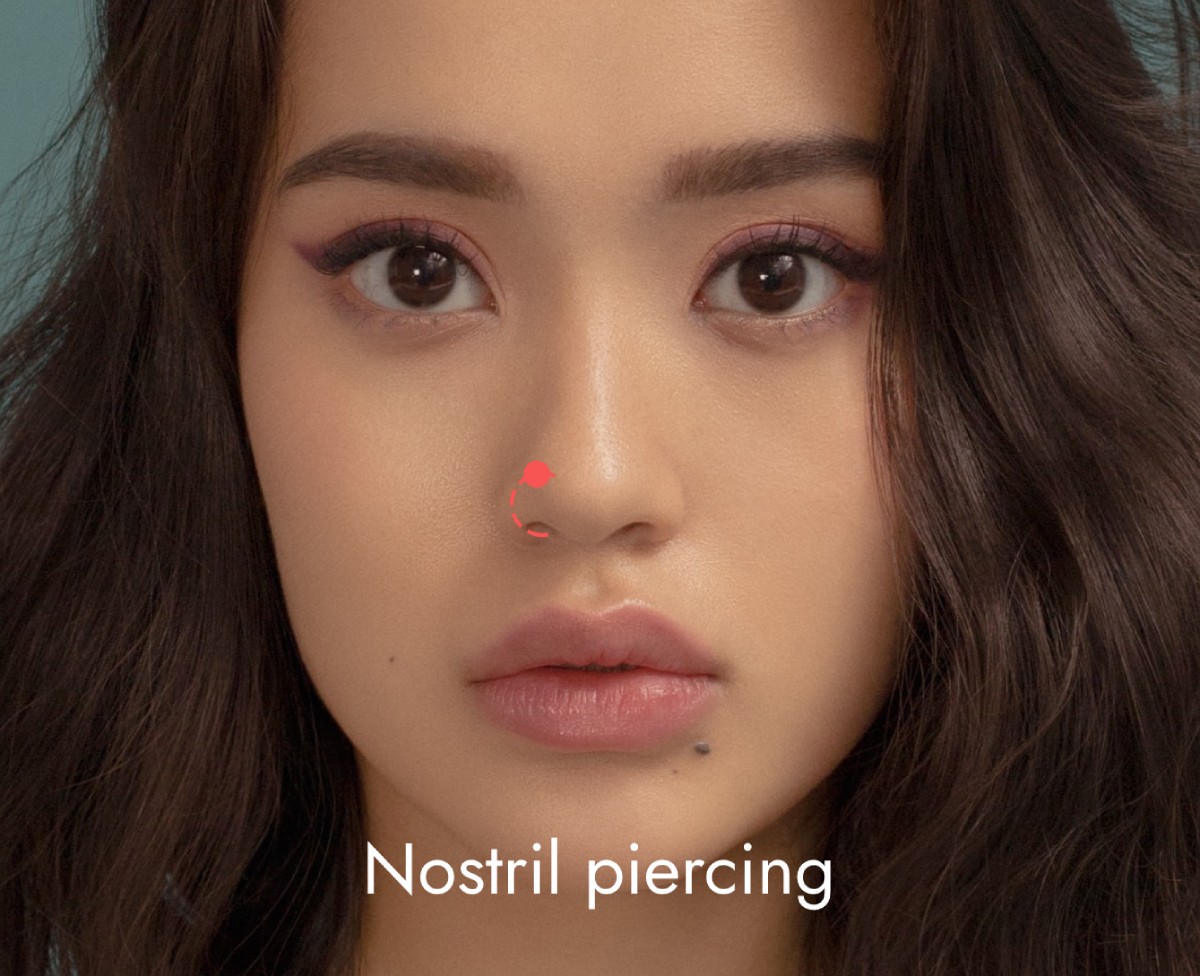
The Nostril piercing is very probably the most common nose piercing type out there. It usually goes through your nostril right where it starts to curve away from your face.
You can use a wide variety of jewelry types here, although studs and rings are the most common.
Some people choose to only pierce one nostril. But if you prefer a more symmetrical look, you might choose to pierce both.
As far as pain goes, this is one of the least painful nose piercings you can get. Healing time is usually only about 2-4 months. It's worth knowing that the area around the piercing is likely to be swollen and red for up to three weeks after the piercing, though.
Variant: Double & Triple Nostril Piercing
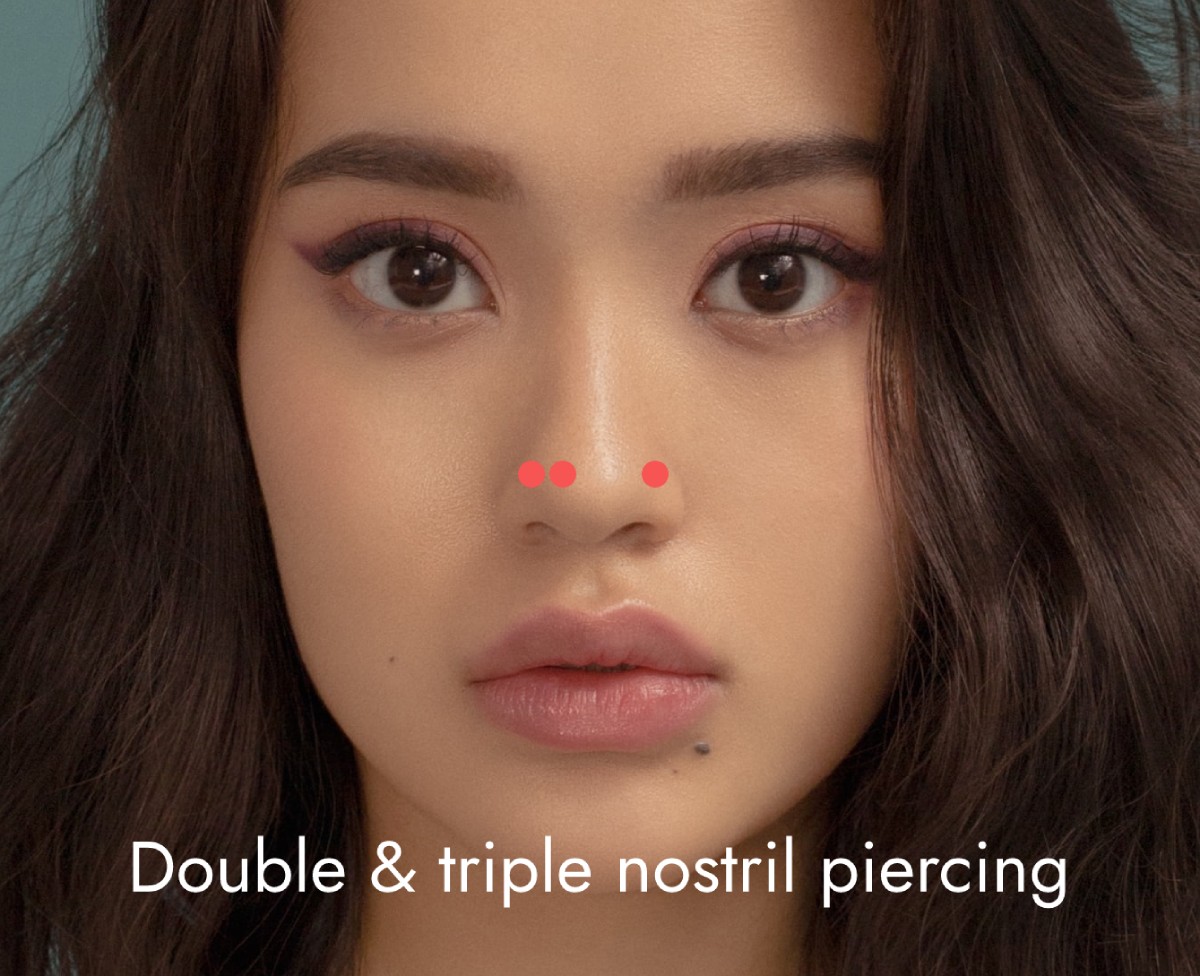
Getting a Nostril piercing is sometimes a gateway to even more piercings! In some cases, people opt to have two or even three piercings on the same nostril. Just like a single nostril piercing, each one is not particularly painful.
That said, if you choose this option, do your best to go to an experienced piercer. Each piercing needs to be placed carefully. Misplacing them can lead to pain and even nerve damage. In order to make placement less complicated, it's usually wise to go for thinner studs or rings.
Variant: High Nostril
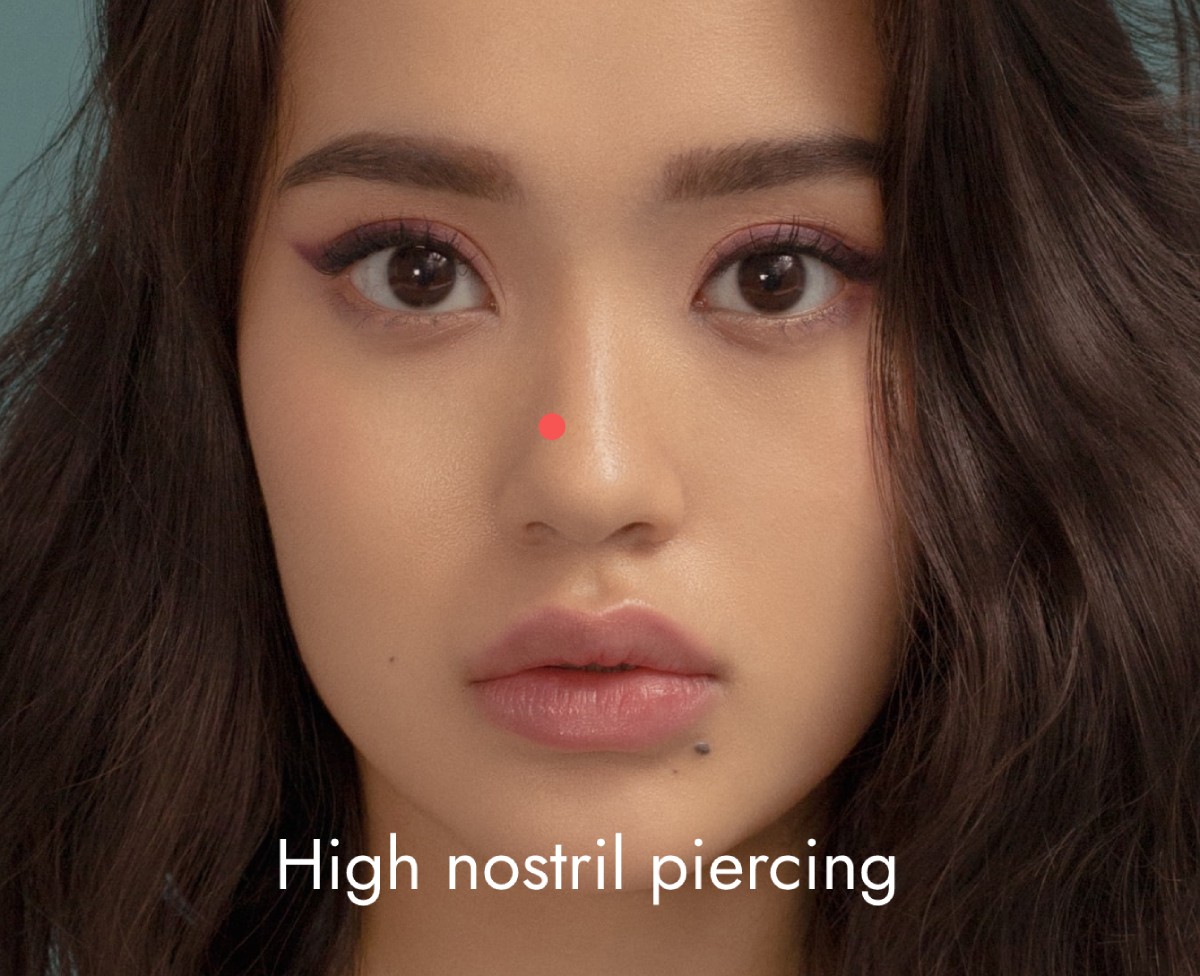
This one has a pretty self-explanatory name. It's similar in appearance to a Nostril piercing, but it is located higher up on the nose bridge. It's a good choice if you like the look of Nostril piercings but want something that's a bit less common. Usually, a very thin (18 gauge) needle is used.
Since a High Nostril piercing goes through a very thick part of your nose, it's a lot more painful than most!
It also takes longer to heal; you can usually expect to wait 4-6 months. Because this type is very prone to infection, make sure you choose a skilled piercer and carefully follow aftercare instructions.
2. Septum Piercing
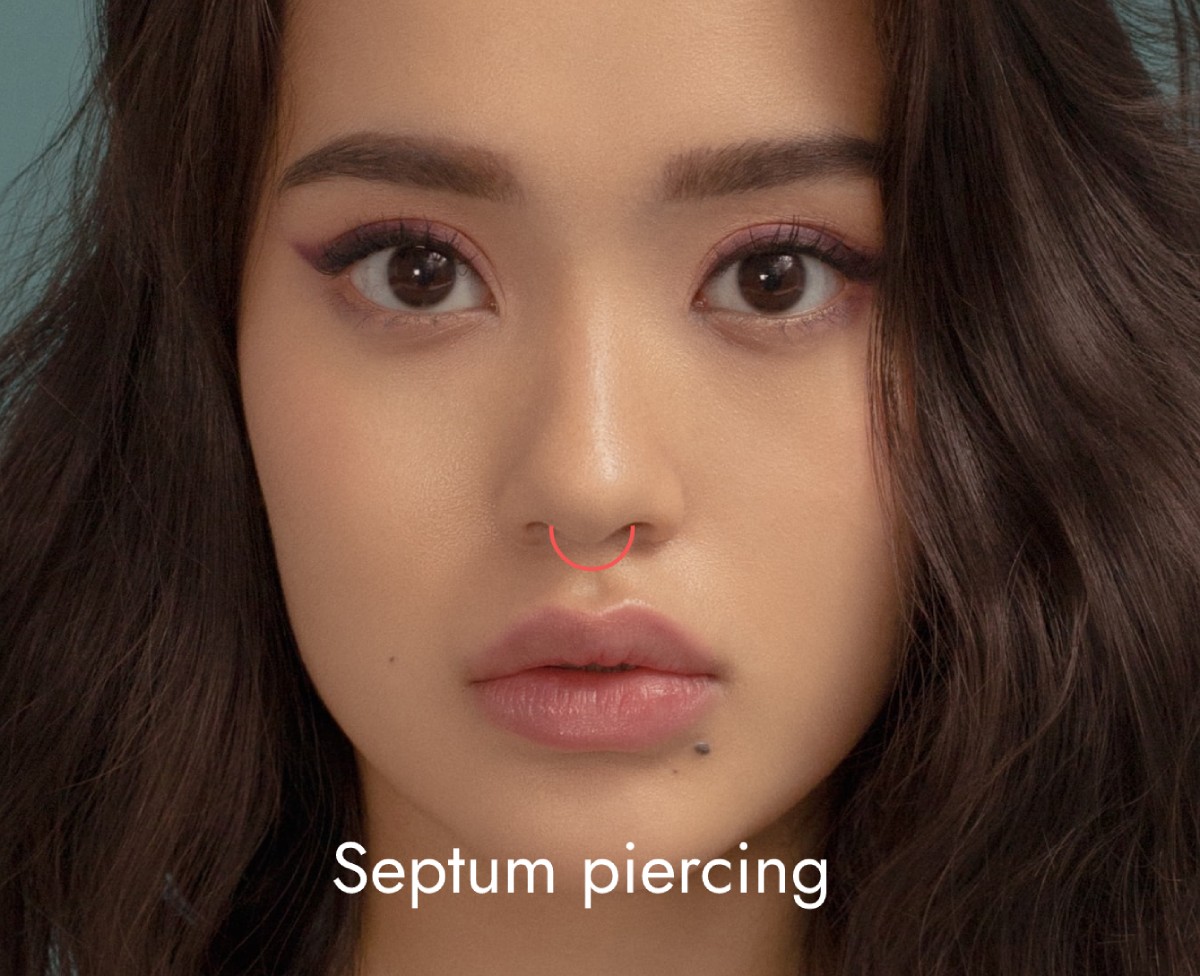
Septum piercing is relatively common, especially among younger people. The piercing itself is placed right in front of where the Septum cartilage begins, so the result is a piercing between your nostrils. Usually, a curved Barbell or a captive bead ring is the best choice.
You might hear some people refer to a septum piercing as a "bull nose piercing." Especially when it's done with a closed barbell, this piercing does look a bit like the nose ring used on bulls.
This is a suitable first piercing, as it isn't particularly painful. Healing time will depend on each individual person, though -- for some people, healing will be complete after 2-3 months. For others, it can take up to eight months.
3. Septril Piercing
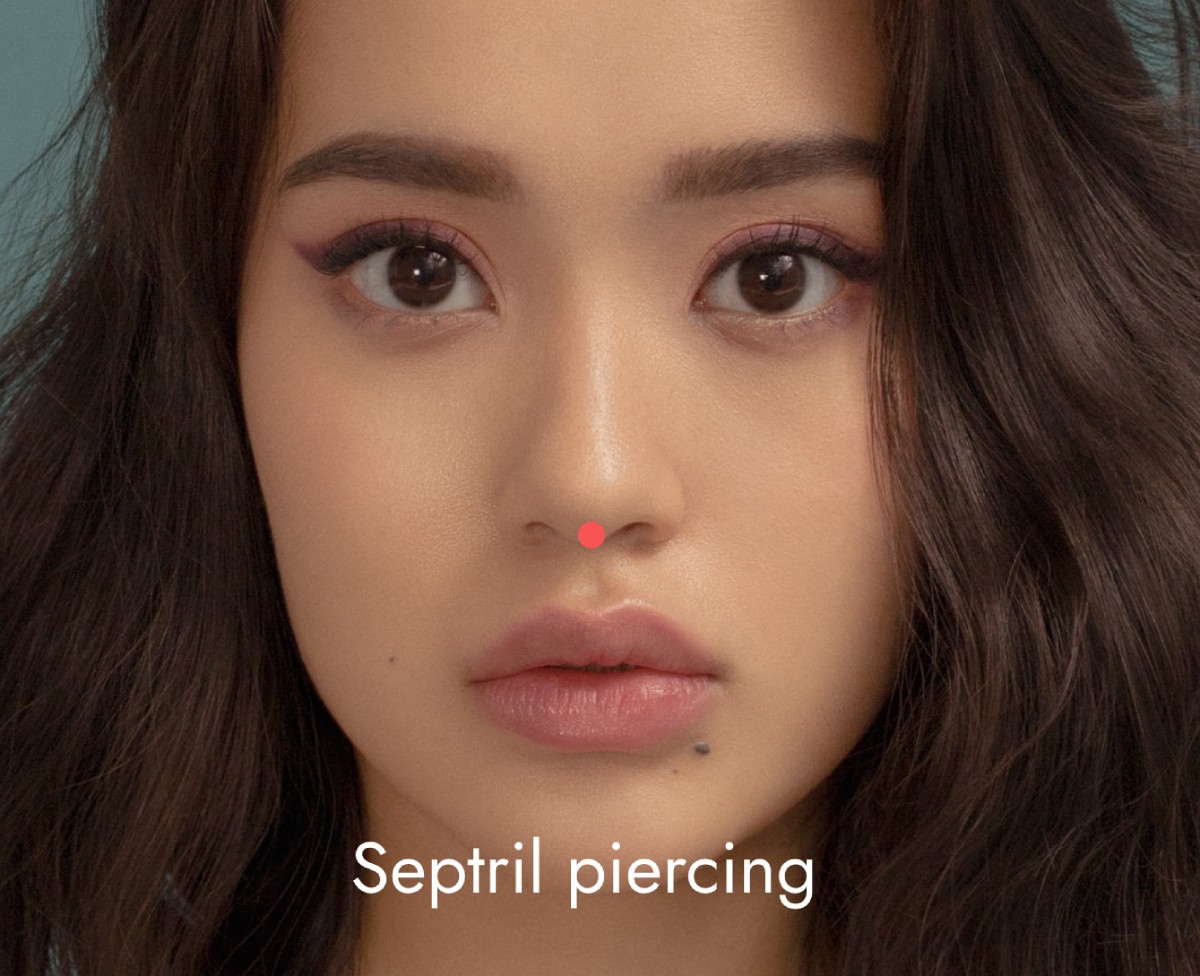
The Septril piercing is one of the more complicated and more painful nose piercings you can get. There are also a few steps involved, so you'll want to make sure you are committed enough to follow through with it.
However, these piercings are very rare, so a Septril piercing is a good choice if you really want to stand out.
The first step toward getting a Septril piercing is getting your Septum pierced. But it doesn't stop there; the Septum piercing needs to be stretched over time. It can be tempting to stretch it yourself, but it's best to leave this to a piercer who really knows what they're doing.
Once the Septum piercing is adequately stretched, it's time for the second part of the Septril piercing. A smaller-gauge needle is pushed through the cartilage right between your nostrils. The goal is to connect both piercings together.
When you combine the need for a Septum piercing first with the healing time for both stages, you can usually expect a Septril piercing to heal fully in about 9-12 months. And as you've probably guessed, the complexity of a Septril piercing means that it's probably not a great choice for your first piercing.
4. Austin Bar
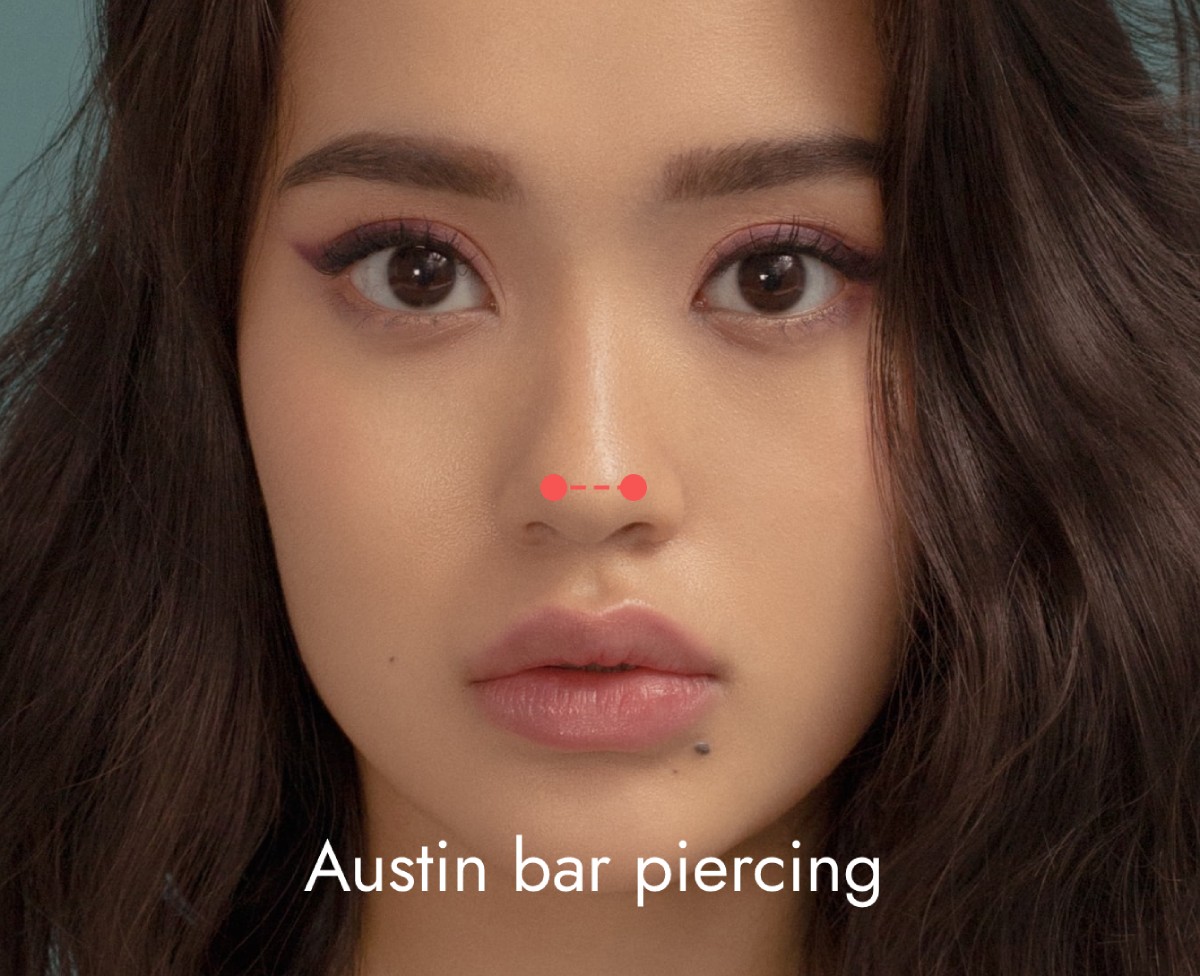
This is a somewhat unusual piercing type. It's a bar that goes through the top part of your nose, and the finished product makes it look like you have a small bead on either side of your nose. Usually, this type will use a fairly short Barbell.
The Austin Bar piercing does not go through your nostrils themselves. Instead, the Barbell threads through the skin right above the nostrils. This feature sets it apart from the more painful Nasallang piercing discussed below.
The main disadvantage of an Austin Bar piercing is that it can be very painful, so it probably isn't the best idea if you've never had a piercing before. However, it only takes around two months to heal.
5. Nasallang Piercing
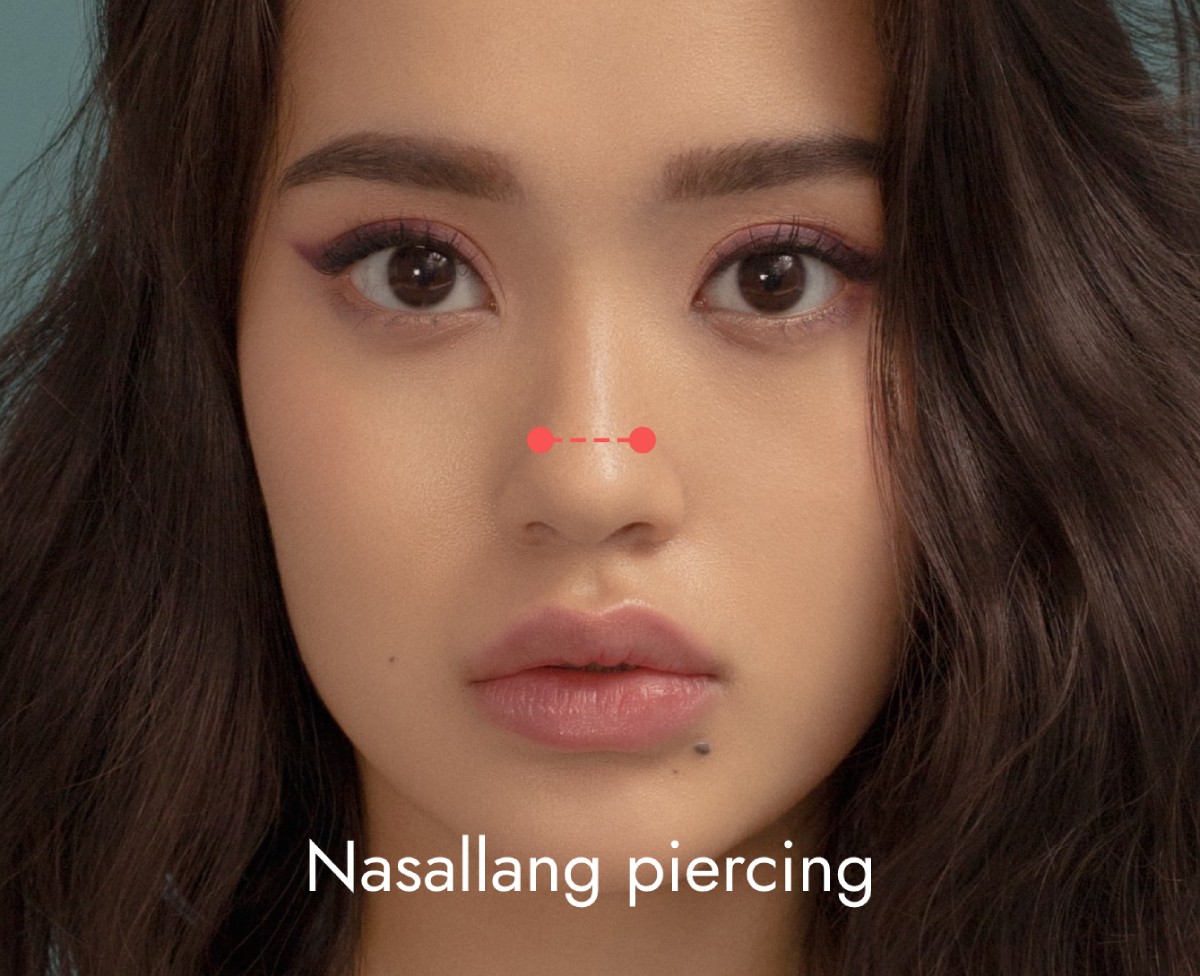
You might sometimes hear this one described as a tri-nasal piercing. To the casual observer, it usually looks like two separate Nostril piercings. But a Nasallang piercing goes through three places: both nostrils and the septum. It's done with a barbell.
As you may have guessed from that description, the Nasallang nose piercing is one of the most painful nasal piercings you can get. It's also one of the more complex nose piercings, so it's very important to seek out a piercer who is good at doing them.
The Nasallang piercing takes a fairly long time to heal. Often, it will take around nine months. But in some cases, it can take up to a year to heal all the way.
And thanks to the bacteria in the nose, this is also one of the more infection-prone piercings. Make sure you follow aftercare instructions and don't hesitate to see a doctor if you suspect an infection.
6. Vertical Tip or Rhino Piercing
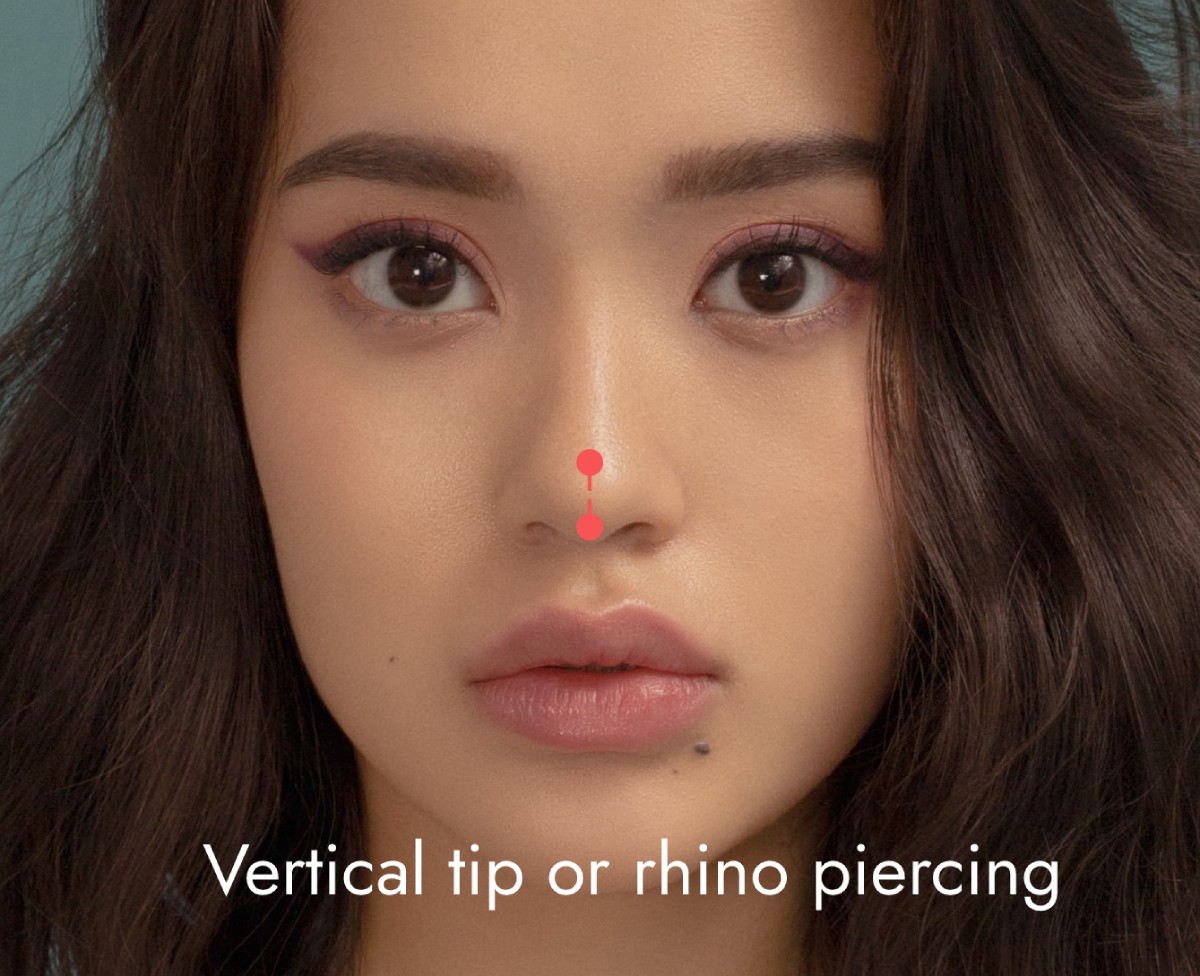
If you really, really want to make a statement, this odd piercing is worth considering. The Vertical Tip nose piercing is often called the "rhino" because it looks a lot like a tiny rhinoceros horn.
It can only be done with a curved Barbell (banana barbell). One end rests between your nostrils while the other one sits between your nostrils on top of your nose.
This piercing goes through a good bit of thicker tissue on your nose. That means that it takes a good bit of time to heal -- usually, you can expect one of these piercings to heal in about 6-9 months. A Rhino piercing is also one of the more painful piercings to get, so it's not a good choice for a first piercing.
7. Bridge Piercing
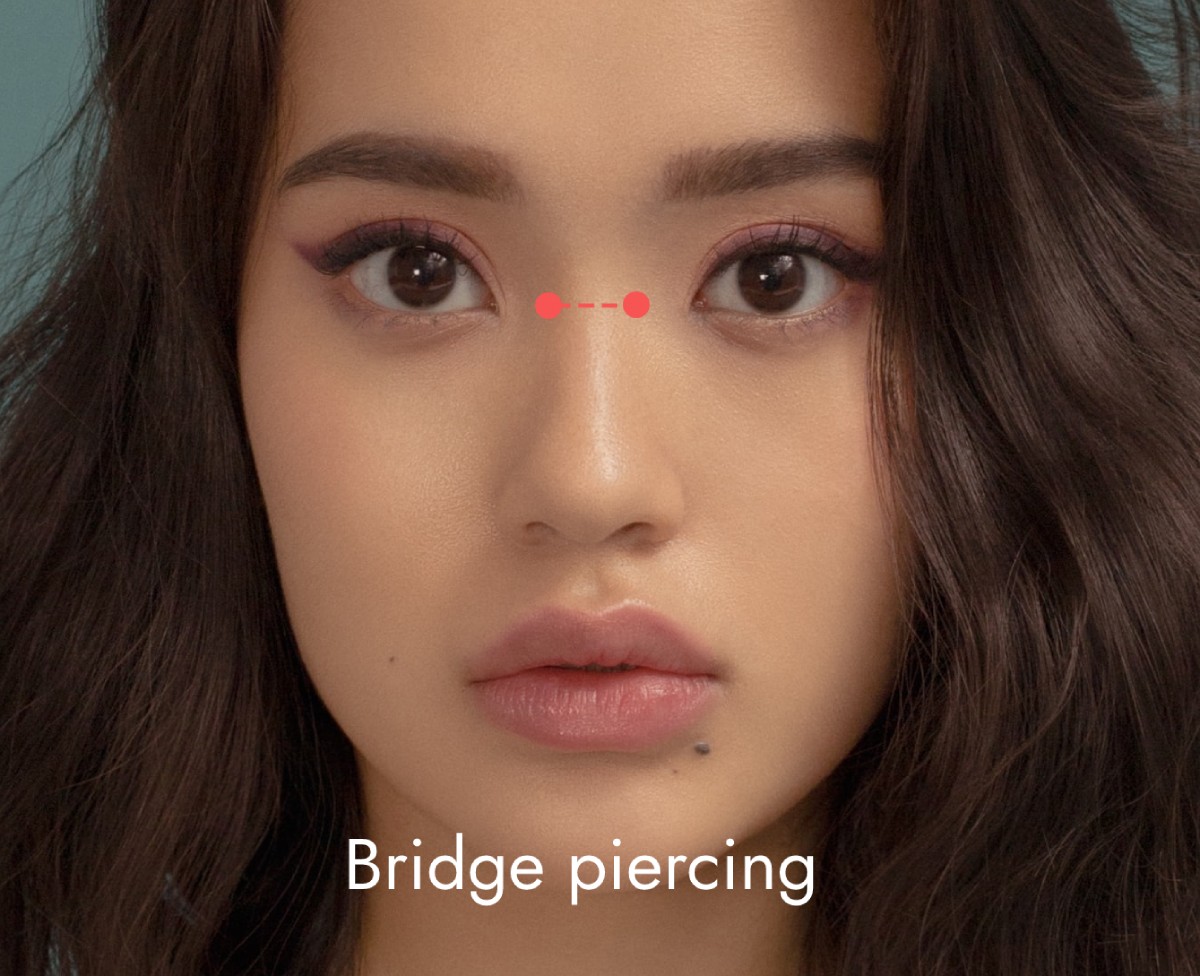
The Bridge piercing is a surface piercing, meaning it only pierces skin -- it does not go through cartilage or bone. It is also referred to as an "erl."
Curved Barbells (banana barbells) are a common jewelry choice for this piercing type. However, shorter, straight Barbells are also relatively common. These piercings make it look as though you have a small bead on either side of the bridge of your nose.
Since it only goes through the skin, this piercing is one of the less painful ones on the list. But be careful -- this is a piercing that can sometimes be rejected, meaning your body will simply push it out of your skin.
If you wear glasses or frequently wear sunglasses, make sure you discuss that with your piercer. They can help make sure that your piercing placement won't interfere with your frames.
A Bridge piercing is similar to a Nostril piercing in terms of healing time; it usually takes around 2-3 months. Since it heals quickly and isn't that painful, it's a suitable choice for a first piercing.
8. Third Eye Piercing
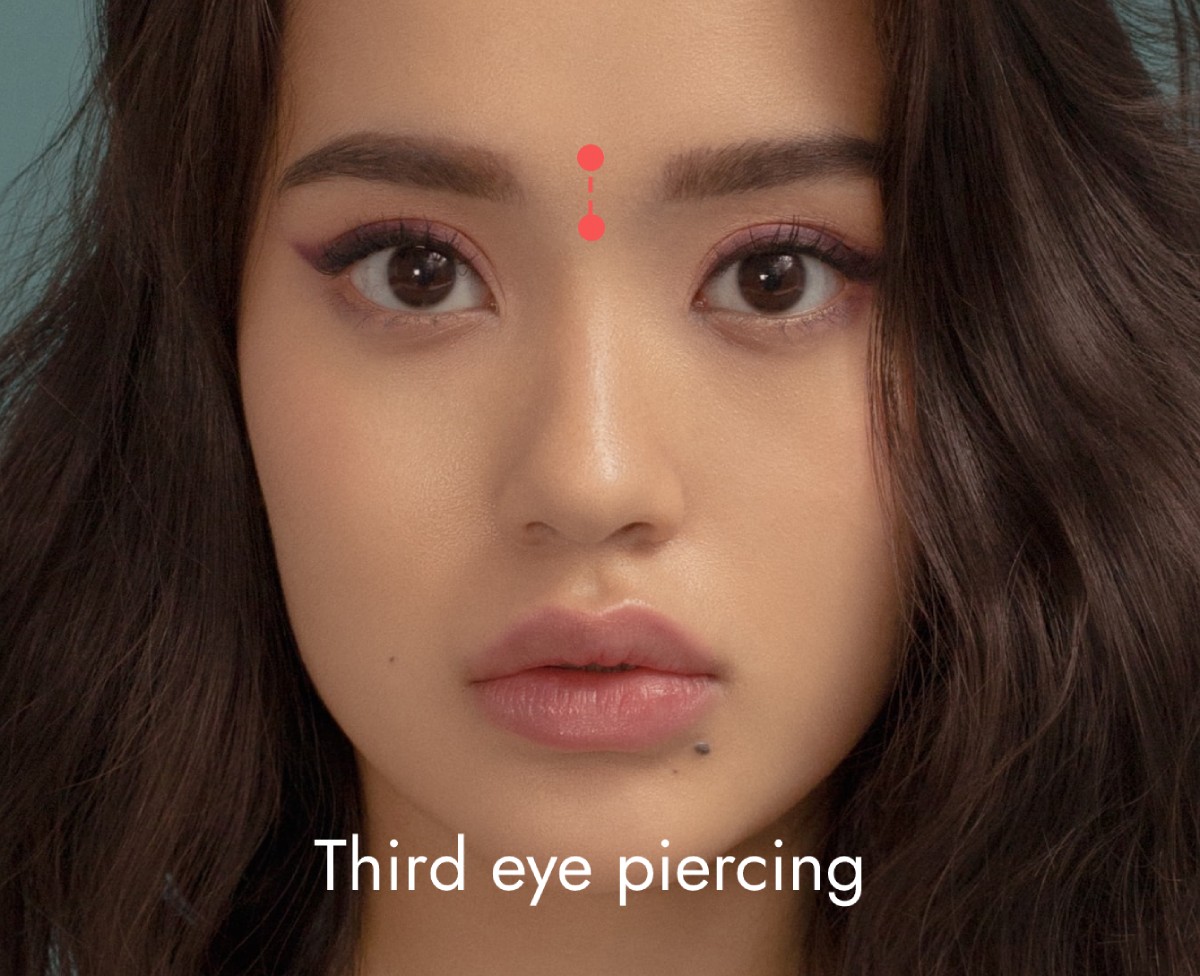
The Third Eye piercing is sometimes called a "forehead piercing." But since the piercing is technically placed at the bridge of the nose, we'll include it here.
A Third Eye piercing is placed squarely between your eyebrows, right at the bridge of your nose. It's often done with a curved Barbell so you appear to have two small beads resting on your skin.
A Third Eye piercing only goes through the skin, so it's one of the least painful piercings on the list. There are a few things to keep in mind before getting one, though. Mostly, you'll want to make sure that you have at least some looseness in the skin between your eyes.
A competent piercer can let you know if you're a good candidate for a Third Eye piercing. If you don't have enough looseness in the skin, this piercing can cause damage to bones or blood vessels. Too tight skin can also make rejection more likely.
How Much Is a Nose Piercing?
Prices will vary widely based on location. But most nose piercings range from $25-$95. Generally speaking, more straightforward piercings like Nostril piercings tend to be on the cheaper end. More complex piercings like Septril piercings will usually cost more.
How Bad Does a Nose Piercing Hurt?
Since everyone has different tolerances for pain, this is a tough question to answer. It really depends on the piercing, too. Piercings that go through fleshier parts of the nose and/or cartilage are much more likely to be more painful.
Nose Piercing Healing Time
How long does it take a nose piercing to heal? The healing time for a nose piercing varies widely. On the shorter end, Nostril piercings can heal in around 2 months. More complex piercings like the Nasallang piercing can take 9 months or even longer to heal.
When Can I Change My Nose Piercing?
On average, you can replace your nose piercing jewelry in 4-6 months. This can vary depending on the piercing type, so be sure to check in with your piercer.
How Long Does It Take a Nose Piercing to Close?
Your piercer will probably tell you to leave your jewelry in continuously. After all, a very new nose piercing can close in minutes or hours. Piercings under a year old can close in hours or days.
Nose Piercing Jewelry
As we saw above, different nose piercing jewelry types tend to be better suited to some piercings than others. Now, here's a bit about some of the more common jewelry types used for nose piercings:
1. Nose Studs

Cute piercing with natural semi-precious gemstones titanium $25.9, SHOP NOW.
Nose piercing studs include labret studs, nose bone studs, L-shaped studs, corkscrew nose studs, and so on.
These are commonly used for nose piercings. Much like stud earrings, they have a straight bar. There is usually a small gem at the top. There are also curved versions that add a bit more security.
2. Nose Rings

Nose piercing clicker titanium septum ring 16G in gold and silver $22.9, SHOP NOW.
Some rings are just loops of thin metal. Others are what's called "captive bead rings." These are rings that are "sealed" with a bead. Sometimes, the bead is inlaid with a gem to add some visual interest. And in some cases, plain "hoop" nose rings may have a small gem on the side.
3. Barbells

Piercing barbell internally threaded 14g 16g $18.9, SHOP NOW.
Barbells aren't really seen a lot in nose piercings, but they are often used for more complex piercings. A barbell is just a long metal bar with two ball ends.
4. Circular Barbells (Horseshoe Barbells)
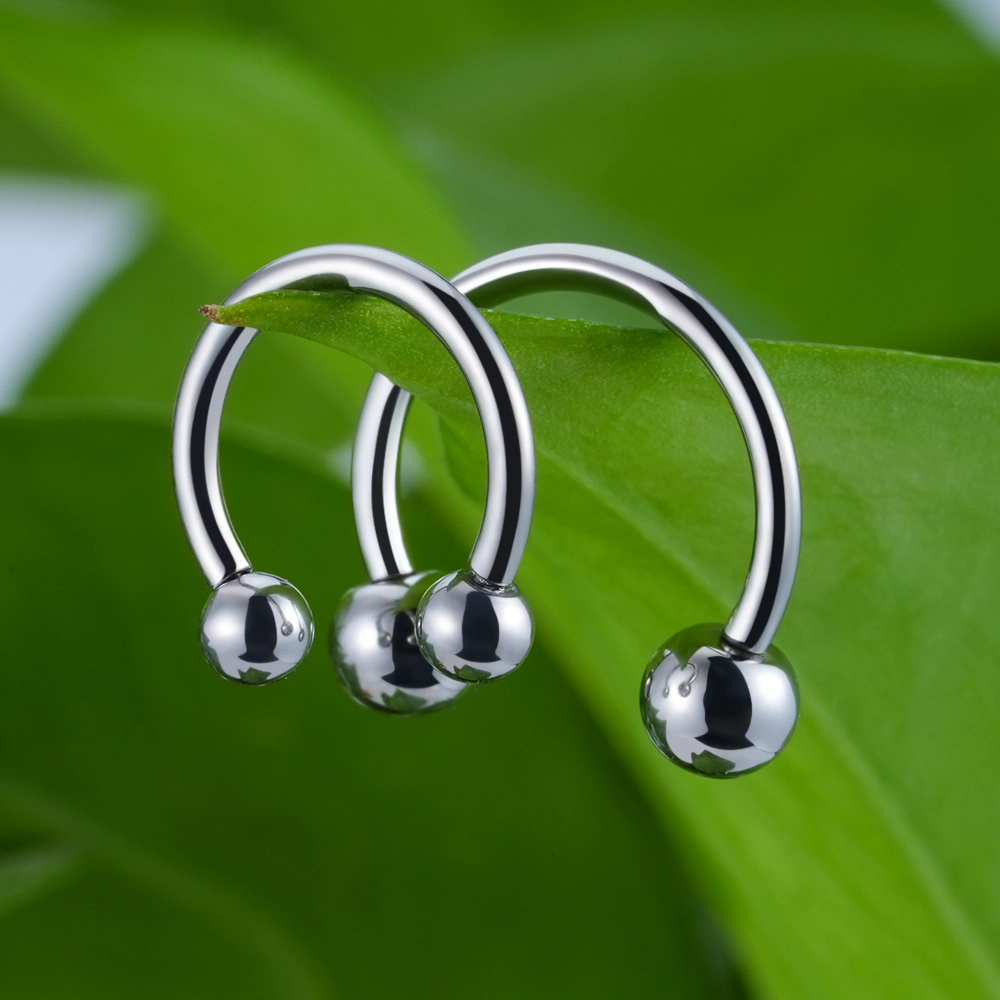
Titanium nose ring horseshoe barbell $17.9, SHOP NOW.
These Barbells are sometimes called "Horseshoe Barbells" because they look like horseshoes. Their curves make them especially suitable for septum piercings.
5. Nose Piercing Chains

Nose piercing chain 0.5mm nose piercing chain $17.9, SHOP NOW.
Chains can be an eye-catching embellishment to nose piercings. Often, a chain will connect a nose ring to an earring. Some chains will connect each end of a Nasallang piercing across the bridge of the nose.
Pros:
- They have a distinctive look that can really make you stand out
- They're a great way to highlight piercings you already have
- You can easily alternate chains for a different look every day
Cons:
- They can easily snag on clothes, hair, etc.
- Heavier chains can pull on piercings and cause discomfort
What Gauge Is a Nose Piercing?
The most common gauges for nose piercings are 18G (1.0mm) and 20G (0.8mm). However, piercers will often use a slightly larger needle (about 16G/1.2mm) to make healing easier. The larger hole allows for some swelling and prevents the healing from getting too tight as it heals.
That said, make sure to listen to your piercer! Experienced piercers will be able to recommend the right gauge to avoid rejection or unnecessary complications.
Safe Materials
Regardless of jewelry type, make sure to choose a high-quality material to avoid infections or adverse reactions. Here are some good materials to choose from:
1. Implant-Grade Titanium

Diamond nose ring 16g titanium with CZ $22.9, SHOP NOW.
Examples of materials suitable for nose piercing include implant-grade titanium; Which is highly preferred and safe from contamination, hypoallergenic, and adaptable to the body.
2. 14-Karat and 18-Karat Gold

14K gold hoop with an opal pendant segment clicker nose ring $146.9, SHOP NOW.
Solid gold is also another material that comes in highly recommended by piercing not only experts but also doctors. Its excellent qualities of being inert thus suitable for first piercings.
3. Surgical Stainless Steel
In addition, surgical stainless steel is highly endorsed due to its easy adaptability to the human body, and it also stops infections.
However, even surgical-grade steel contains small amounts of nickel that could cause allergic reactions in those with skin sensitivities.
Potential Risks of Nose Piercings
Before you get a piercing, it's important to know the risks. Here are some common ones:
1. Infected Nose Piercing
You can expect some swelling and redness after a piercing. But if the redness persists or gets worse and you notice extra swelling and/or pus around the area, it's likely infected.
How to Treat an Infected Nose Piercing?
- If the infection is mild, you can usually get rid of it by washing the piercing two to three times a day.
- Use isopropyl alcohol, betadine, diluted hydrogen peroxide, or another antiseptic.
- Apply antibiotic ointment after washing it.
- If the infection persists or gets worse, you may want to see a doctor.
2. Nose Piercing Bump
Typically, a raised red bump around the nose piercing is a sign of infection. Make sure to use the treatments above to control the nose piercing bump -- if it worsens, you could develop a severe systemic infection.
And as a side note, with bumps or other signs of infection, don't remove the piercing! That can cause the hole to close, sealing in the infection.
3. Keloid and Scar on Nose Piercing
Untreated infections can lead to scar tissue around the piercing. Sometimes, if left untreated, an infection will lead to a buildup of fibrous tissue that causes a scar called a keloid.
Keloids are uncommon, but they can be hard to treat. If you have a noticeable keloid, be sure to consult with a dermatologist for treatment advice.
Nose Piercing Aftercare
- Take care to avoid contaminating the piercing.
- Avoid touching it or applying makeup very close to it.
- Avoid getting in the water that might be dirty.
- Clean your piercing twice per day using a saline solution made for wound cleaning or soap and water to prevent infection.
- Avoid ointments as they prevent necessary air circulation.
- And of course, make sure to avoid snagging on clothes or towels.
- Wear loose clothing. Avoid wearing tight clothing or clothing that may rub against the piercing, as this can cause irritation and slow down the healing process.
- Use hypoallergenic jewelry like implant-grade titanium and 14- or 18-karat gold. Surgical-grade steel may contain small amounts of nickel that could cause allergic reactions.
- Don't move the piercing unless you're cleaning it. Pulling on a piercing early in healing is painful, but it also can get in the way of healing or damage the piercing itself.
- Wait until your piercing heals before changing out your jewelry.
- Watch for potential signs of infection and consult your piercer or doctor if it becomes infected.
You should ensure you get pierced by someone experienced and reliable who utilizes the right cleaning and sterilization procedures. You’ll also need to choose high-quality jewelry that you aren’t allergic to. After you get your piercing, be sure to follow all instructions from your piercer.
How to Clean Nose Piercings?
It is recommended to use sterile saline that you buy from the store, rather than homemade saline, for cleaning your piercings. Homemade saline may be too salty for delicate piercing sites, leading to dryness and delayed healing.
Using mild, fragrance-free soap and water to clean your piercing site is also an option.
If you prefer homemade salt solution. You can start by mixing 1/2 teaspoon of non-iodized salt with one cup of distilled or boiled (for at least 20 minutes) water. You may choose to use less of the salt mixture like 1/4 to 1/8 teaspoon if you want a weaker solution that’s less likely to burn or sting. Stir the solution until it dissolves.
If you see signs of infection, you can also use antiseptic solutions, such as betadine, isopropyl alcohol, or diluted hydrogen peroxide. However, avoid using them for daily cleaning as they can damage cells.
Then proceed with the following steps to clean your piercing:
- Soak a cotton ball, a paper towel, or a non-plush cloth with the solution. Avoid fabrics that could snag and pull the jewelry or leave fibers behind. Gently saturate the piercing and cleanse it. Don't remove the jewelry!
- If you have a sterile saline wound wash that you buy from stores, then spay it while healing.
- Ensure you cleanse the piercing of any discharge or crusty material.
- Take clean gauze or cotton swabs and pat the area dry.
Your piercer should give you detailed instructions on how to keep your piercing clean once it has been placed.
Final Thoughts
Now that you've effectively gotten a primer on the world of nose piercings, we hope you have a better idea of which type to get. Of course, when in doubt, be sure to discuss your options with your piercer!
Read More
9 most common types of nose rings, studs and chains with pictures













